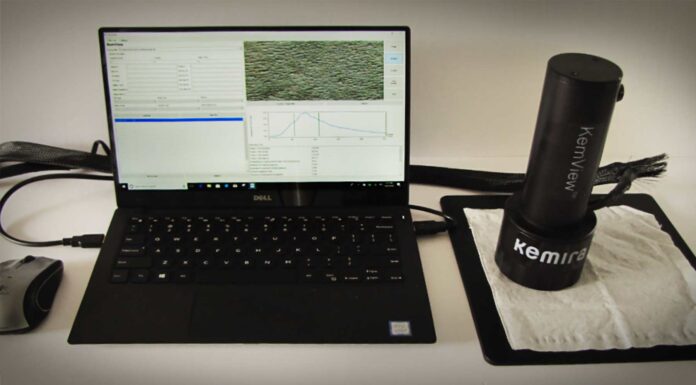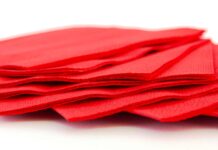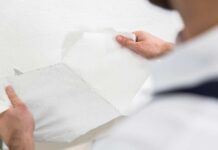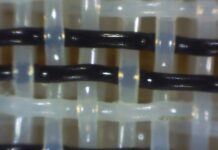By Kemira Chemicals’ Tiago de Assis, Research Scientist, R&D & Technology, and Lucyna Pawlowska, Senior Applications Specialist, Strength & Tissue.

A comprehensive analysis of tissue properties can reveal root causes for a variety of problems that impact both product and production performance. This article discusses the innovative, data-driven approach to tissue quality analysis by Kemira. By combining the basic tissue properties with the more detailed qualitative and quantitative analysis on the sheet structure, tissue producers can optimize product performance, improve process efficiency, and increase the overall economics of production through optimized chemical treatment.
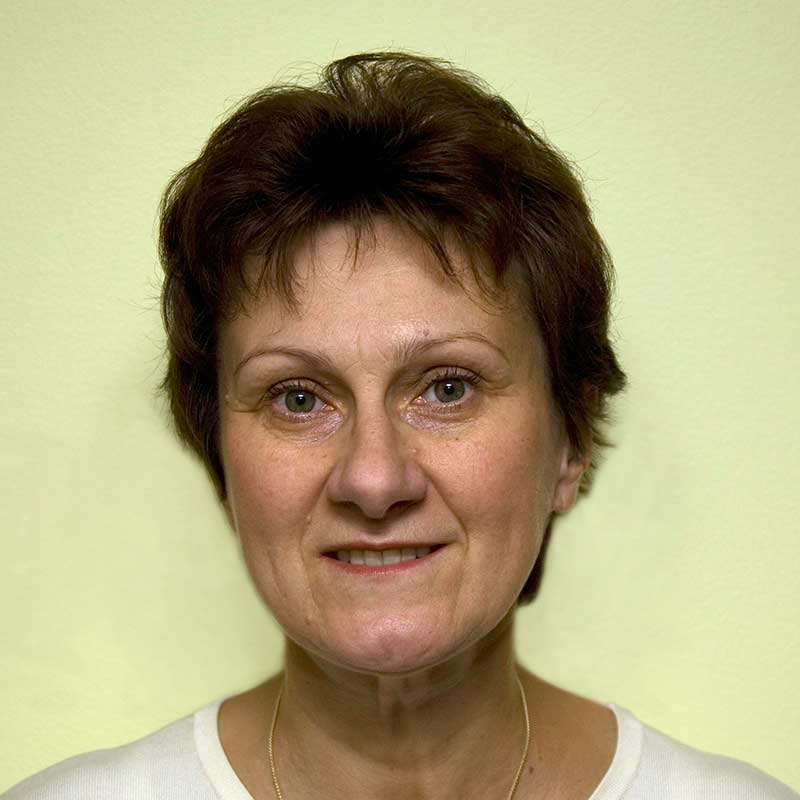
Kemira’s Tissue Quality Analysis (TQA) [as illustrated in figure 1] combines basic tissue properties (caliper, basis weight, dry strength, wet strength, absorbency, softness, disintegration) with the patented KemView Sheet Structure Analyser (SSA) for a complete characterisation of tissue sheet quality. This approach provides a more comprehensive understanding about the cause-and-effect relationship between product performance and tissue making variables. The combination of basic tissue properties and KemView SSA capabilities represents a powerful approach to fully characterize tissue products, identify the root cause of problems associated with product performance and process efficiency, support product and process improvement activities, and select the best chemical treatment solutions.
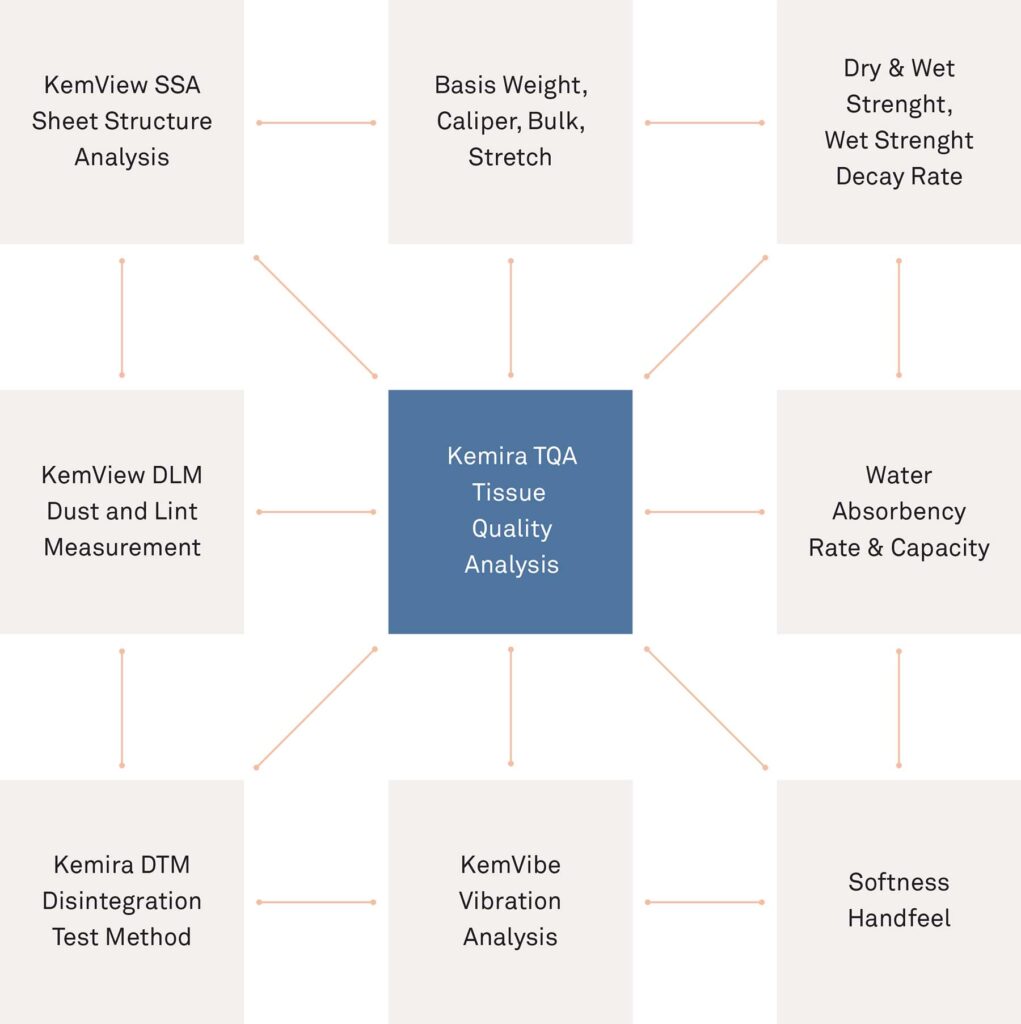
3D analysis of sheet properties that impact product quality and process efficiency
The patented KemView Sheet Structure Analyzer Generation II [picture 1] is a novel image-based instrument that provides 3D analysis of the tissue sheet structure. KemView SSA is a small and portable instrument that can be effectively used as a laboratory or field support tool. KemView SSA has the size of a flashlight and consists of a digital optical detector with multiple LED light emitters that illuminate the sheet sample. Sheet analysis is easily done by simply placing the device on top of the sheet sample and clicking the analysis button. Each measurement takes only seconds to perform.
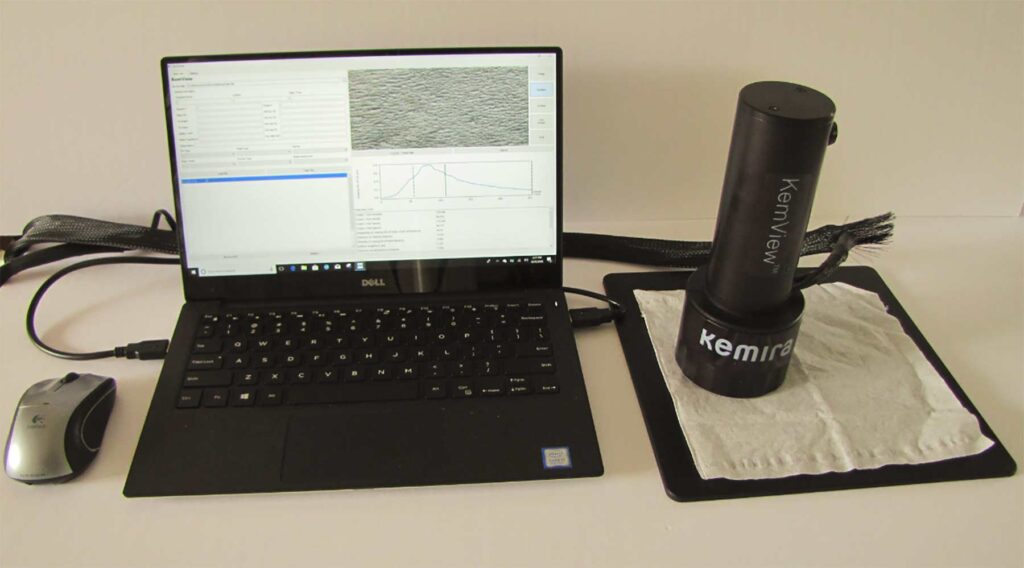
The collected images are analysed by the KemView SSA software and the measured sheet properties are easily exported to excel for quantitative analysis. The images can also be saved for qualitative visualization of the sheet structure.
KemView SSA measures different sheet properties that are known to have a strong impact on tissue performance and are utilized to improve product quality and process efficiency:
• Crepe bar count: number of crepe bars created during the creping process
• Surface roughness: deviation of surface height
• Regular markings: visibility of patterns created by structured fabrics and converting operations
• Pinholes: sheet area covered with holes larger than 200 µm
• Free fibre ends: number of fibres extending more than 50 µm out of the sheet plane
• Dust and Lint: amount of fibre, fines, and ash particles loosely attached to the sheet surface.
Qualitative and quantitative sheet structure analysis help optimise production
Table 1 presents practical examples for the type of qualitative and quantitative analyses that can be done with KemView Sheet Structure Analyser.
For conventional tissue, fine crepe structure is achieved with a high number of crepe bars and is important to control sheet caliper, softness, and absorbency. Fineness of crepe structure is an indicator for the correct time to change the creping blades and the correct balance between the adhesive and release properties of the Yankee coating, which are important factors for the proper delamination of the fiber web structure during the creping process. Surface roughness is also used as an indication for the fineness of the crepe structure. High number of crepe bars creates a tissue sheet with lower surface roughness and superior surface feel. Low sheet adhesion at the Yankee drier surface and wear of doctor blade will develop a product with low crepe bar count, high surface roughness, high caliper, and low softness.
Low area of pinholes is important to achieve desired sheet strength and reduce basis weight at the same time. High number of pinholes is detrimental for product strength due to the introduction of excessive number of weak points on the sheet. In addition, excessive number of pinholes can cause dust and lint issues. Pinholes are directedly correlated to the quality of sheet formation. Pinholes are also introduced to the sheet when the Yankee coating adhesion is very high. The areas of high adhesion between the sheet and the Yankee coating will create small holes on sheet as these areas are not easily scrapped by the creping blade and remain attached to the Yankee surface.
For structured tissue, proper formation of structured pockets is important to maximize product caliper, softness and absorbency. Quality of structured sheets is also used to indicate excessive wear of structured fabrics and to adjust tissue machine components (e.g. molding boxes, vacuum systems, pressure rolls, and through air driers). Different sheet structure variables can be used to monitor the quality of structured sheet. Regular markings and surface roughness indicates the proper formation of structured pillows during the manufacturing of structured tissue. Regular markings and surface roughness are also used to monitor the adequate imprint of embossing marks during converting operations. For structured tissue, the number of crepe bars is used to monitor the total area of the sheet that is glued on the Yankee surface.
Tissue dusting and linting is a major problem for many tissue producers and converters as it can affect occupational health and safety (e.g. fire hazard, respiratory hazard), process efficiency (e.g. equipment failure, unexpected shutdowns, frequent cleaning), and end-user satisfaction (e.g. dust build-up around tissue dispensers, lint build-up during surface cleaning, sheet pilling during personal use). Typically, tissue products that are manufactured to provide high softness with low strength, such as bath and facial tissue, have the highest tendency for dust and lint issues.
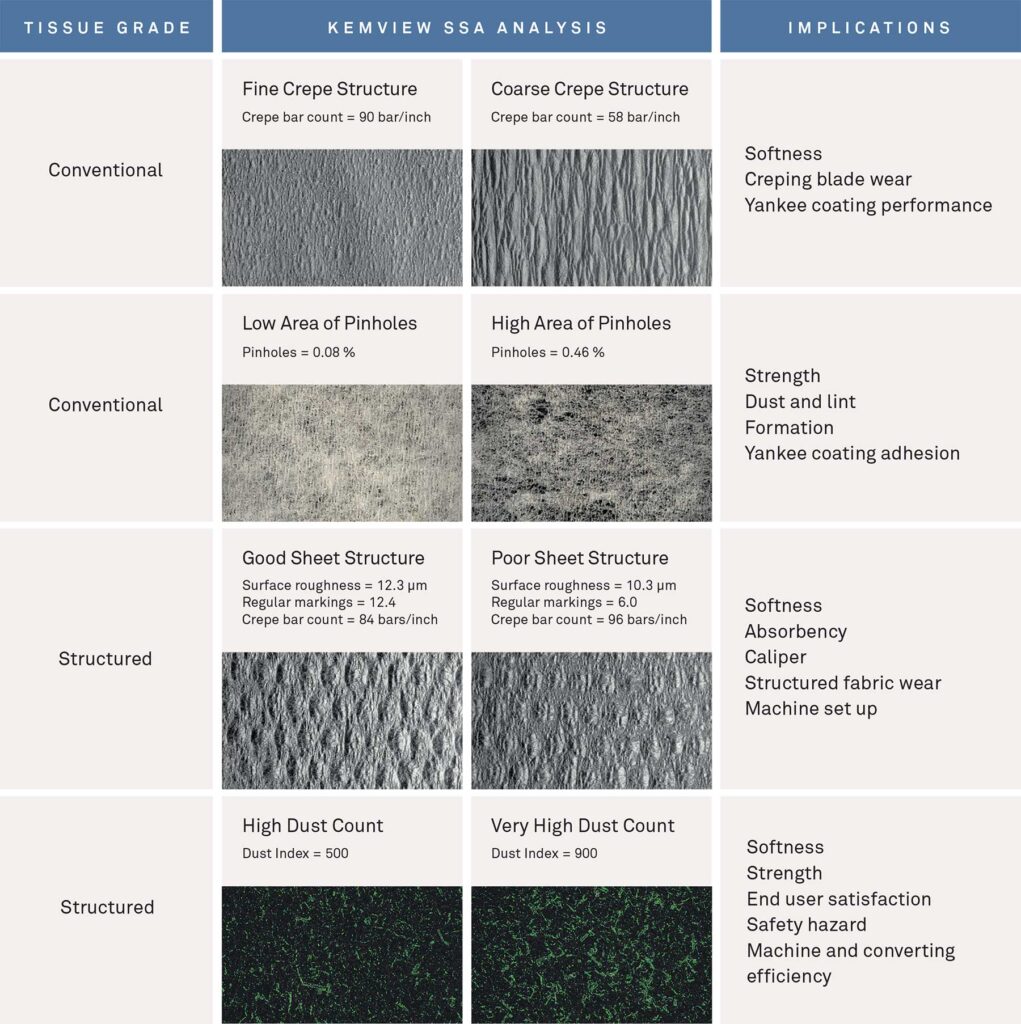
Other potential sources for dust and lint problems are:
a) Process design: layering of short fibres on sheet surface, fines generation due to excessive refining and inadequate use of enzymes, weak tissue surface due to high Yankee coating adhesion, low sheet moisture creping, lack of strength additives to improve the bonding ability of fibers.
b) Furnish type: high content of short fibres, high content of fines, high content of recycled fibres
c) Sheet structure properties: high number of free fibre ends, high number of pinholes.
Optimising tissue strength, softness, and dust
More important than analysing the basic tissue properties or sheet structure properties individually is to have a clear understanding about the effect that a process change, made to improve a given tissue property, might have on other product attributes. We use Multivariate Analysis to study the relationship among different tissue properties and process variables during product optimisation activities. This approach helps with the identification of the best chemical solutions to improve a given tissue property without jeopardising the overall product and process performance.
A strong relationship between tissue strength, softness, and dust is typically observed in tissue products (as illustrated in Figures 2a and 2b). We rely on data analytics to select the adequate combination of Kemira’s tissue chemistries (e.g. dry and wet strength additives, softeners, and creping additives) to develop tissue products with superior softness and minimum dust generation without sacrificing product strength. Due to the significant effect that wet strength chemistries have on tissue disintegration (as illustrated in Figure 2c), Kemira’s temporary wet strength additives with high wet strength decay rate are designed to create tissue products with sufficient wet strength and very high disintegration.
Summary
Kemira’s Tissue Quality Analysis (TQA) is a complete approach to perform a comprehensive characterisation of sheet quality by combining basic tissue properties and the capabilities of the KemView Sheet Structure Analyser. TQA helps with the identification of the best chemical treatments to improve tissue performance, enhance machine efficiency, and improve the overall economics of tissue making processes.
This article was written for TWM by Kemira Chemicalsí Tiago de Assis, Research Scientist, R&D & Technology, and Lucyna Pawlowska, Senior Applications Specialist, Strength & Tissue.





















